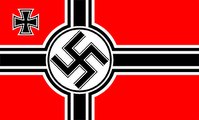
In the world of Journalism a top story would be described as a "Man Bites Dog" headline. In Norway you would have to change that to "Man bites Moose". As we do not have them in the UK, Moose, that is, you may find it difficult to understand what an important role the Moose plays in Norwegian journalism. For example when a Scotsman was asked "What do you get with a 2 ton Moose" his reply was "Bloody big holes in your skirting boards"! Ask a Norwegian and what you get with a 2 ton Moose you would still be there 3 hours later listening to the answers. In Norway the Moose grabs more headlines than Jorden, Sharon Osborne or Georgie Best!
The most recent Moose headline in The Aftenposten was on 17th October 2005, "Moose attacked moose statue" A family in the coastal Telemark town of Bamble had erected a statue of a moose in their garden, but a pair of the real Moose showed their dissaproval and broke the interloper into several peices. "Moose regularly visit the garden but they'previously they have just eaten our apple and pear trees," Tveten, the statues owner, said.
On 12th October the Aftenposten had another Moose headline: "Moose collisions hurt most" Apparently Norwegian motorists hit over 3,000 of these creatures a year and always come off worse. Norway's insurers pay out about NOK 100 million (£9 million, USD 15.3 million) a year for animal-car collisions, most of them involving game - moose and roe deer.
One of the best headlines has to be " 'Dead' moose attacked hunter" A hunter's worst nightmare came true for 68-year-old Arne Aurdal after shooting a moose in the forest in Gausdal. Aurdal is considering giving up the sport after being beaten black and blue by the mortally wounded animal, though he survived thanks to a bit of quick thinking.
Aurdal, had taken the moose down with his first shot. He moved in to finish it off. Suddenly the animal reared up, I threw myself onto his horns, he said. The moose thrashed around in a frenzy, after what seemed an eternity but was less than a minute the giant, 300kg, animal crashed to the ground, leaving Aurdal black and blue but thankfully alive. He is keeping the massive antlers as a memento of his near death experience.
No wonder they leave big holes in your skirting boards.
I found over 50 Moose related headlines in Norweigian newspapers without really trying, here are a few for the really dedicated Mooseologists!
Moose set off on long-distance swim
Moose closes tunnel
Moose spark traffic trouble in Trondheim
Moose rings twice
Expanding moose population spurs calls for more hunting
Moose attacks laundry rack
Landowners see gold in moose hunting
Moose breaks into grocery store
Norway's annual moose hunt
Moose on the move!
Flying moose lands on car's roof
Drunken moose alert in southern
Norway Moose move proves fatal
Moose pose record-high traffic threat
Vital Statistics

Moose can be found in Canada and northern parts of America, northern parts of Europe (Scandinavia, Russia) and Asia (Siberia, Mongolia, Northern China).
Life span: 15-25 years
Weight: 550-700 kg (1200-1500 lbs)
Body length: 2.5-2.7 metres
Moose are herbivorous mammals, the largest of the deer family.
The Moose population in Norway is about 125,000









